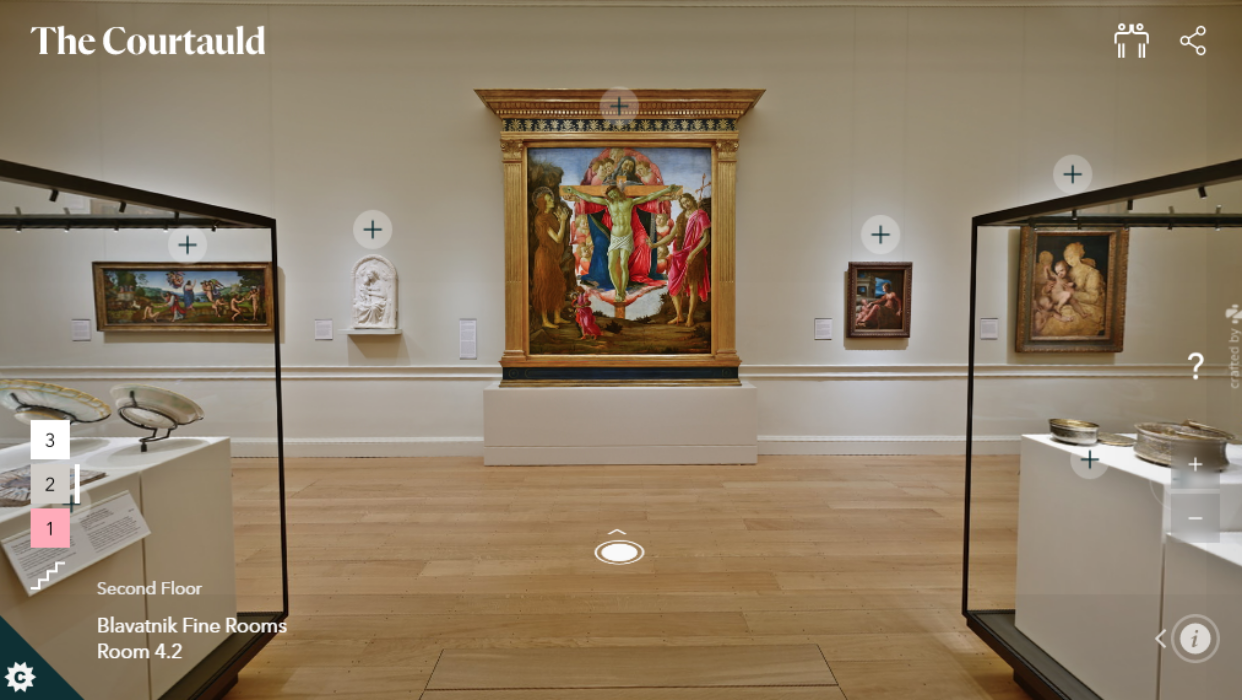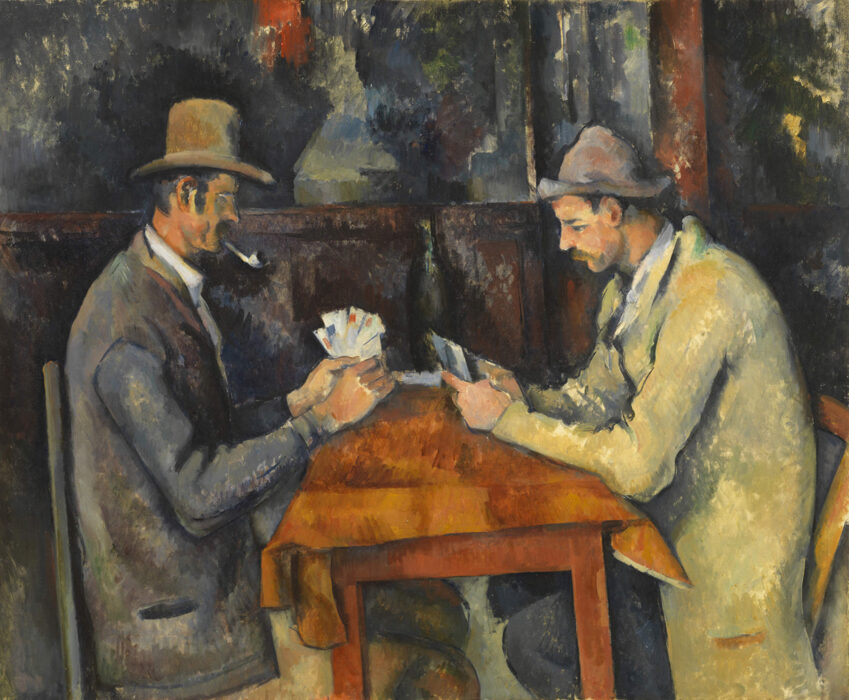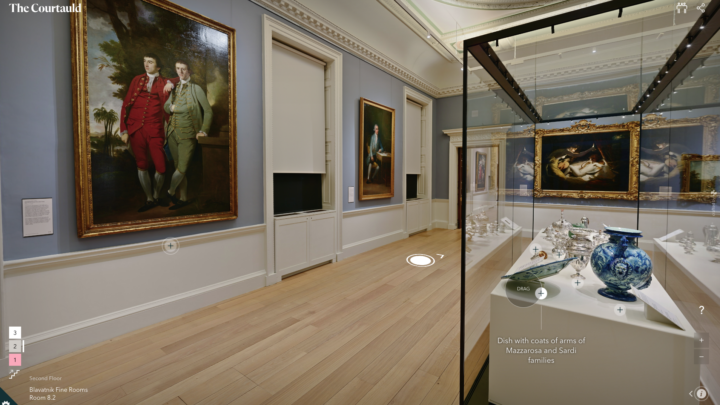
The Trinity with Saints Mary Magdalen and John the Baptist
Sandro Botticelli
The Trinity with Saints is one of the most important paintings by Botticelli in the United Kingdom.
A vision of the Trinity dominates the work. God the Father sits on a throne surrounded by angels and holds the cross bearing his crucified son. The dove of the Holy Spirit hovers above. The altarpiece has long been linked to the convent of Santa Elisabetta delle Convertite in Florence, a community of nuns who welcomed repentant prostitutes. This location explains the presence, on either side of the apparition, of John the Baptist, patron saint of Florence, and Mary Magdalen, patroness of the convent. The Magdalen is covered by her hair and John wears a fur garment, recalling the long periods both saints spent as hermits in the wilderness. Life for the nuns of the Convertite convent was similarly austere as they were urged to follow the example of Mary Magdalen who abandoned a worldly life for one of penitence and devotion.
The two smaller figures in the foreground are drawn from the Old Testament: the Archangel Raphael guides the young Tobias on his quest to collect a debt owed to his blind father. On the way, they find a fish with healing properties able to cure the father’s infirmity. The story thus echoed the convent’s mission of protection and rescue.
The altarpiece is thought to have been painted between 1491 and 1494, when work on a new chapel for the convent is documented. Recent technical study has revealed, however, that the painting’s creation may have taken place over a longer period of time as the composition underwent several significant changes. In particular, Tobias and Raphael were once further away behind the cross (and more in proportion to the other figures), nestled in a landscape of rolling hills that was later painted over. As was common practice in the Renaissance, many hands worked on the painting. Botticelli ran a large studio and delegated portions of larger works to assistants. In the Trinity altarpiece, it is likely that the heads of the angels were painted by members of the workshop, in contrast to the main figures that exhibit Botticelli’s characteristic graceful line.
Zoom in close with Google Art Camera:
Explore this painting in our virtual tour
This painting is on display in the Blavatnik Fine Rooms, Level 2 of The Courtauld Gallery. You can view this room from the comforts of your home through our new virtual tour.

Watch a short film
See more collection highlights
Explore The Courtauld’s remarkable collection of paintings, prints and drawings, sculpture and decorative arts.










